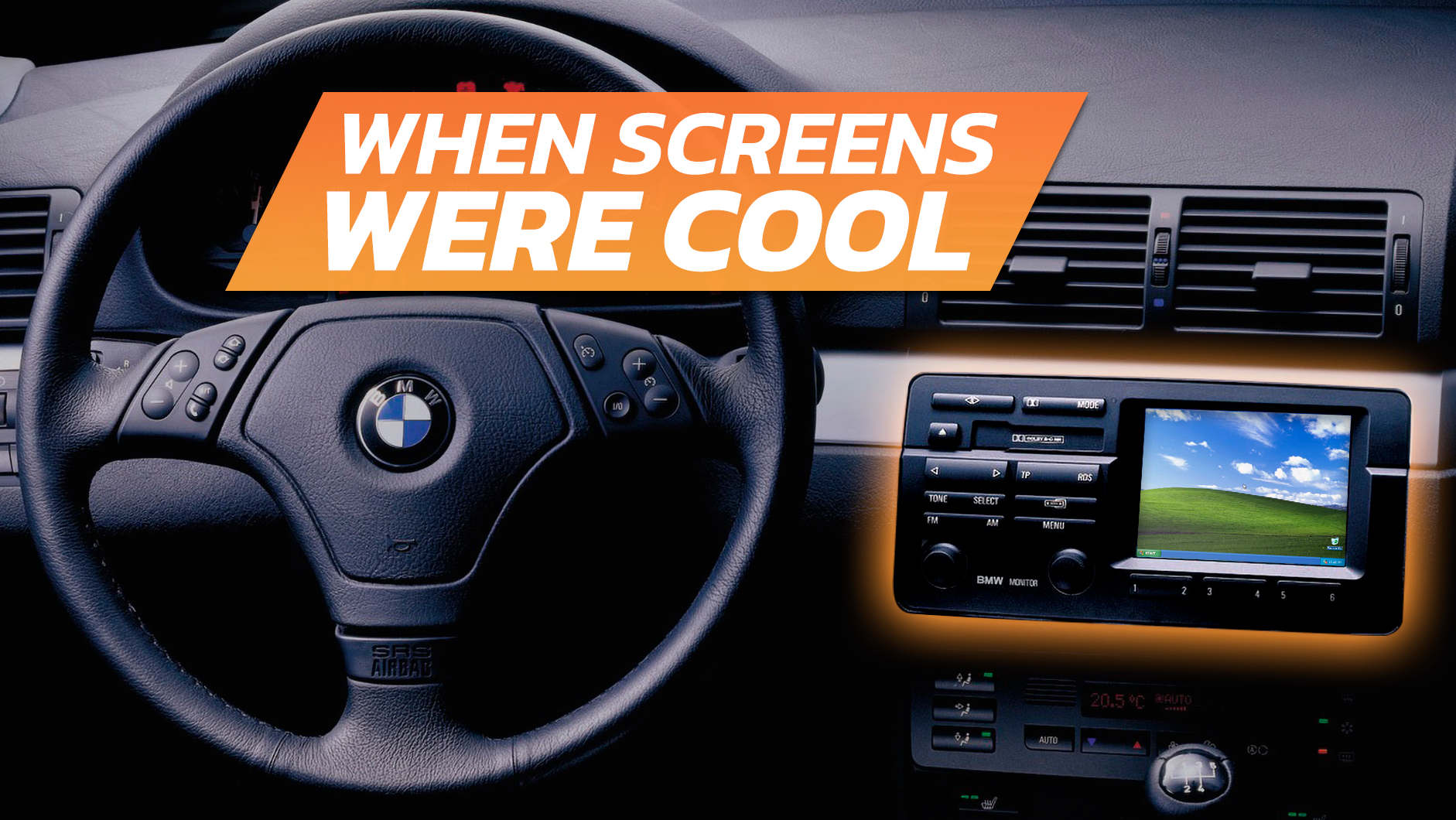

In 2024, automakers have all but perfected car infotainment. They also let Google and Apple—companies that know a thing or two about user-friendly interfaces—take over the dashboard. One of the unintended side-effects of infotainment maturing was the swift death of the in-car computer, or “carputer,” which has largely gone unsung.
Hardly anyone remembers this fever dream of the aughts, when people were hacking up dashboards while wrestling with looms of wire and hastily-made cable harnesses for the sake of putting computers in their cars. The dream died for the collective good when infotainment leapt ahead a few light years. But no matter how polished Big Tech’s interfaces are, they’ll never be as fun as the carputers people were building in their garages and sharing on forums like mp3Car.
Like any good interior mod, the carputer, or CarPC, was conceived of in the pursuit of listening to music. There just had to be a better way to get all those MP3s from Morpheus and LimeWire into your ride than burning countless CDs on Roxio. But carputers were also homemade precursors to today’s infotainmnent screens, putting features like digital music playback, turn-by-turn navigation, email, and weather on the dash.
This literally required shoehorning a personal computer into your car, which was no easy feat in the 2000s before PCs evolved into smartphones and tablets. Netbooks were barely on the scene, to put things into perspective. Builders had to first figure out how to power the computers, then come up with clever solutions to hide the motherboards and mount the screens that relayed all the information. By “clever” I do mean crude, as many grainy videos of builds show on YouTube:

If that wasn’t enough, tinkerers also had to package all the extra components and wiring into tight spaces behind dashboards, sometimes routing the electronics to the trunk as carmakers used to do with factory alarm systems, amplifiers, crossovers, and CD changers. People would fabricate custom assemblies or force their way into their dashboards, cutting and sanding stock plastics to integrate their carputer displays. Choosing the right screen was another can of worms altogether, and folks would go back and forth on forums debating over monitors from Lilliput and Xenarc.
The most popular LCD monitors of the time would seem small to us, measuring around 7 inches, and many of them lacked touch input. Sure, these displays are obsolete now, but even with their low-res graphics piped through VGA cables, people were excited to see screens larger than those of calculators on their dash. For the builder themselves, I imagine the sense of pride made it worthwhile, too.
That’s probably why people were eager to share even the most unsightly carputer creations. If you were lucky, or really talented (or both), you could pull off something that looked stock, as if it had come from the factory with a fully-functioning computer brain behind the OEM head unit. Something like the tidy system this BMW E46 owner built:

For some reason, BMW owners tended to be big proponents of the carputer movement. I first came across such projects on BMW forums when I owned an E46 and daydreamed of tossing out its BMW Business CD stereo to replace it with a headless carputer and well-placed display. Basically, I wanted a splash screen with a cool BMW logo and some way to put the Winamp skins of my childhood onto the dashboard of my car. At that point, I was going off to college armed with an old Apple iBook G4 that I replaced with a ThinkPad convertible whose Wacom digitizer made taking notes in class fun.
I loved tech back then because it struck a good balance between hardware and software, and commanded a physical presence. In retrospect—or, in comparison to what we have now—yesterday’s tech was flawed and slow but, dammit, it had personality. It hadn’t been reduced to a thin slab of metal and glass whose only hope of “improving” is to grow bigger and bigger every year.
I’ll blame the onset of mobile devices for murdering the in-car computer. Those earlier, custom systems eventually gave way to setups based around Android tablets, like the Nexus 7, greatly simplifying the whole build process. Not long after, iOS and Android took over the world and then, slowly, our cars. The carputer was reborn at the hands of automakers who partnered with tech companies to bring us perfectly polished, homogenous interfaces like CarPlay and Android Auto. The homemade carputer gave way to glass-clad dashboards with massive touchscreens front and center. You know the rest.
The irony of it all is that now would be the ideal time to be a fan or builder of carputers. Putting aside social media and the perils of artificial intelligence, we’re living in a veritable golden age of technology. We are spoiled for tech: from versatile Raspberry Pi kits, to impossibly-small PCs, to 3D printing that would make short work of fabbing up display housings to look as stock as possible. The forward momentum of tech has undoubtedly given us a lot, but we’ve lost things, too. Screens in cars were once cool, before our time was gamified and everything we owned was replaced with subscriptions.
Got tips? Send ’em to tips@thedrive.com